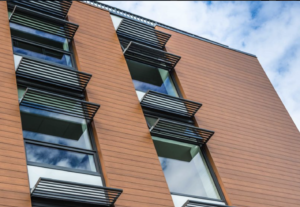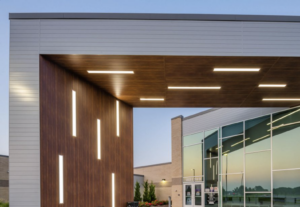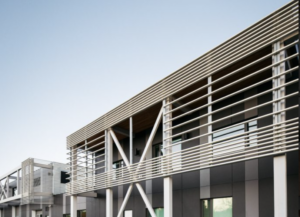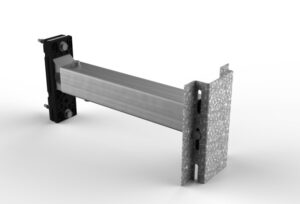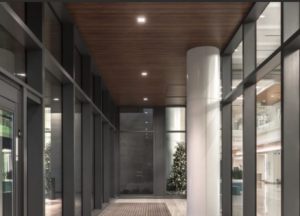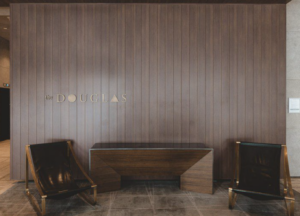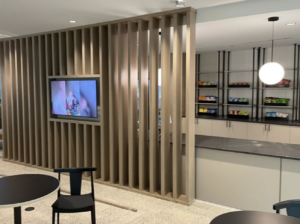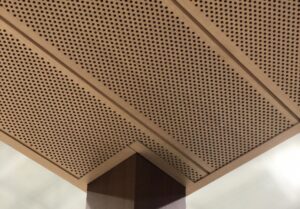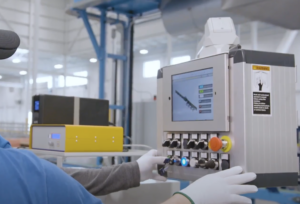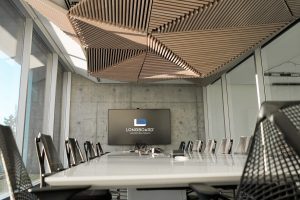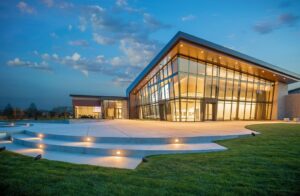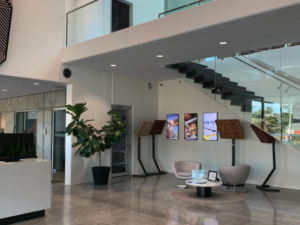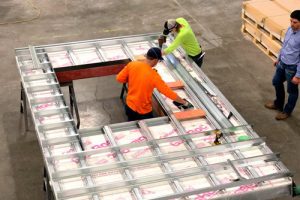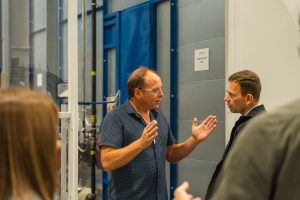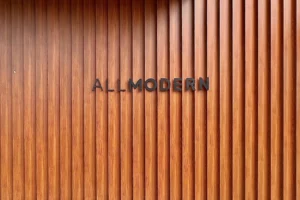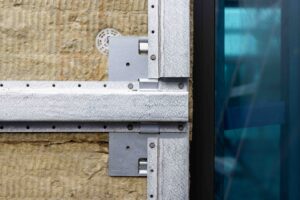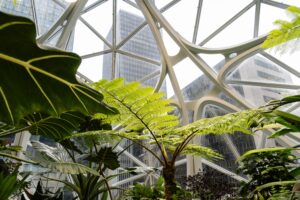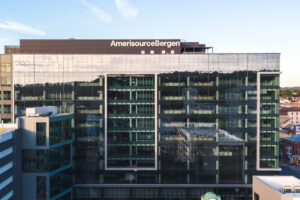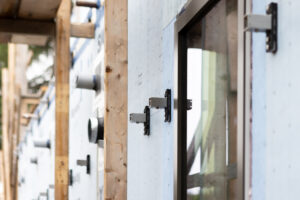Content Type:
Case Study
Project Type:
Education
System Name:
T&G Planks
Installation:
Exterior
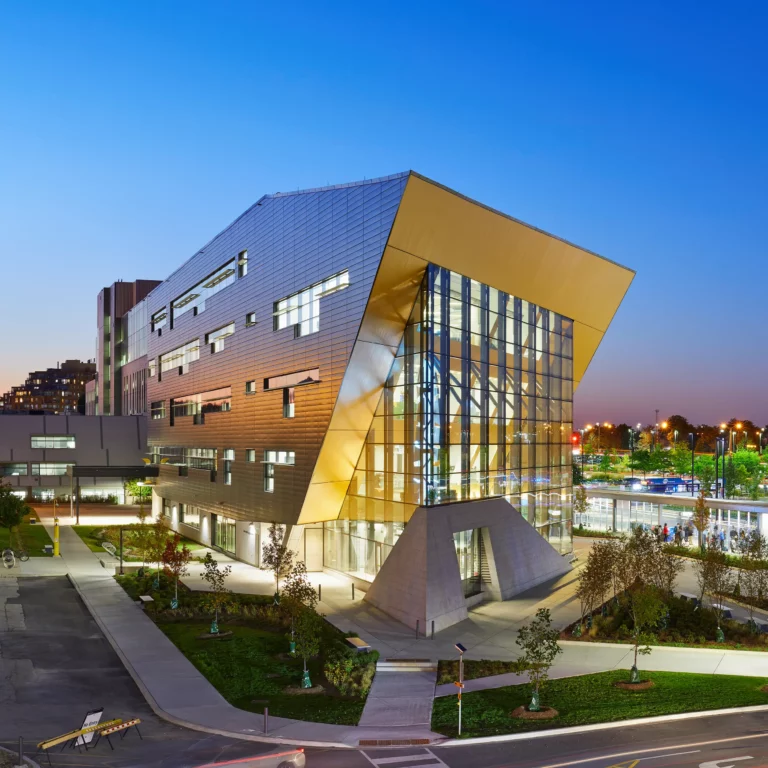
Barrett Centre for Technology Innovation
Project Details
Product: 6” V-Groove
Finish: Light Oak
Use: Cladding & Ceiling
Architect: Perkins&Will
Installer: Bothwell Accurate Co. Inc.
Photographer: Joe Markovic
Market: Institutional
Year: 2019
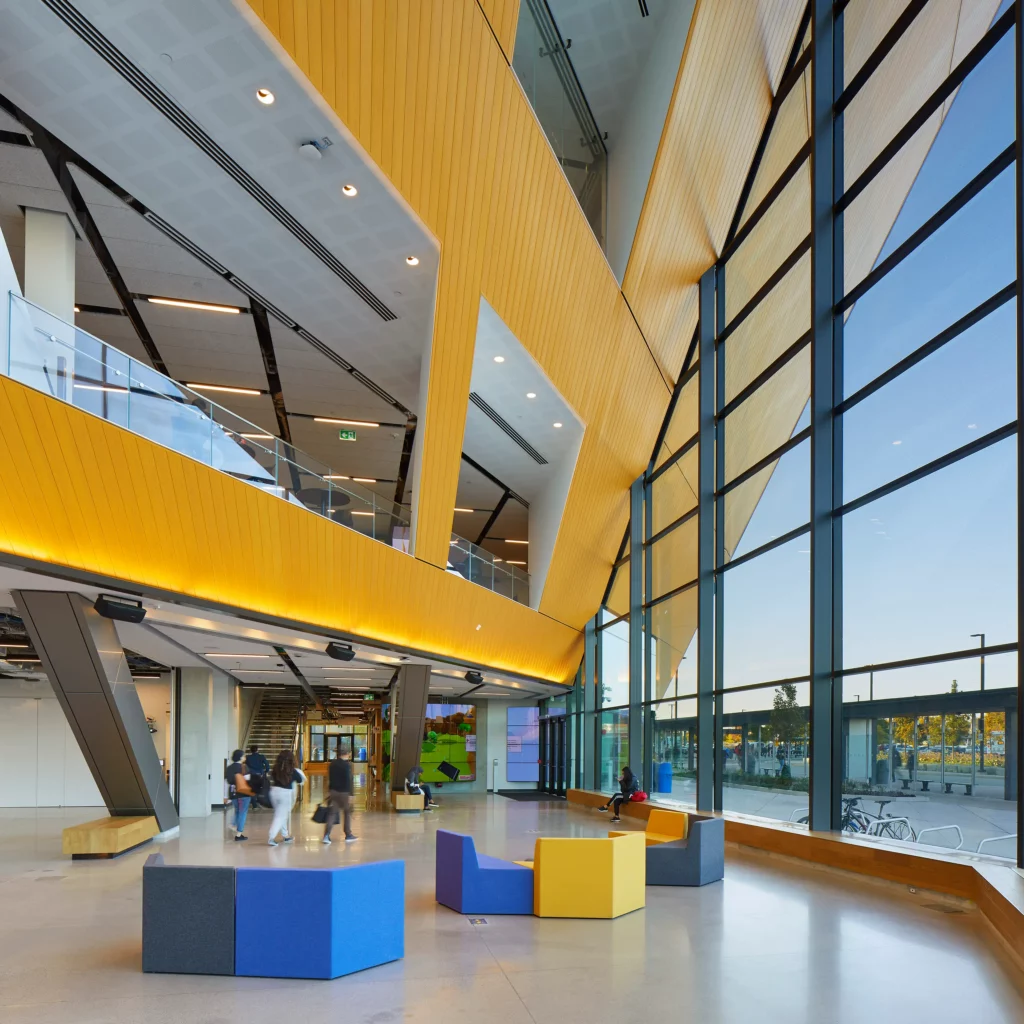
The Barrett Centre for Technology Innovation centre was designed with a focus on functionality, sustainability, and aesthetics. The building’s exterior is characterized by its sleek, contemporary lines and use of glass, metal, and concrete. The cladding is Longboard’s 6” V-Groove in our bright and encouraging Light Oak finish. The design incorporates a variety of sustainable features, such as a green roof, a rainwater harvesting system, and geothermal heating and cooling. The building’s interior spaces are open and filled with light, featuring an abundance of natural light, expansive windows, and a central atrium that provides a sense of community and connection.
Aesthetically pleasing academic structures like the Barrett Centre for Technology Innovation are essential for providing an optimal learning environment for students. Beautiful and inspiring buildings can stimulate creativity, encourage collaboration, and promote a positive learning experience. They can also contribute to the overall campus culture, attract new students and faculty, and enhance the institution’s reputation. The Barret Centre’s modern and dynamic design is an example of how academic buildings can be both functional and visually appealing, creating a positive and inspiring environment for students to learn and grow.
BCTI incorporates many environmentally sustainable features, making it a model for green building design. The green roof helps to reduce stormwater runoff and provides insulation, reducing the building’s energy consumption. The rainwater harvesting system collects and recycles rainwater for use in the building’s plumbing systems.
The geothermal HVAC system utilizes the earth’s natural heat to regulate the temperature of the building, reducing the amount of energy required to heat and cool. The Barrett Centre’s commitment to sustainability demonstrates the importance of designing buildings that are not only visually appealing but also environmentally responsible.
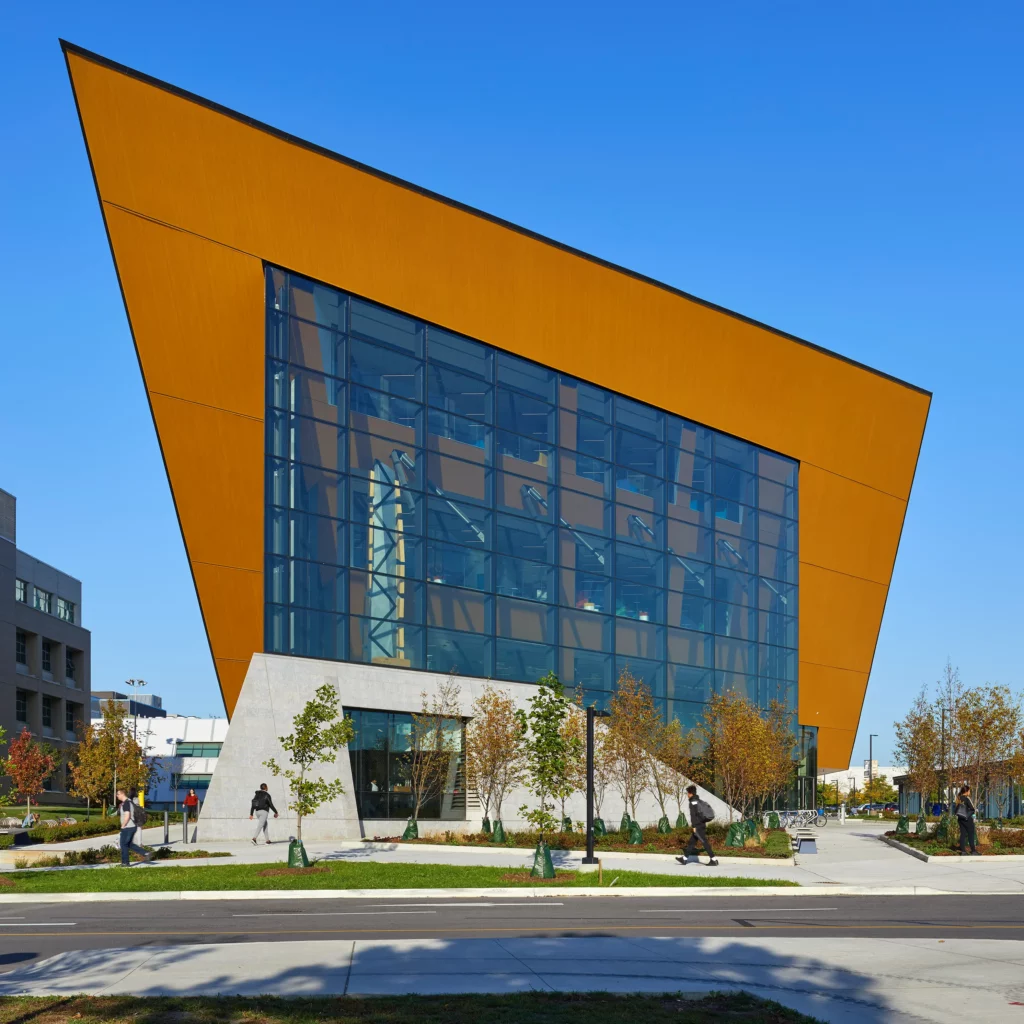

BCTI incorporates many environmentally sustainable features, making it a model for green building design. The green roof helps to reduce stormwater runoff and provides insulation, reducing the building’s energy consumption. The rainwater harvesting system collects and recycles rainwater for use in the building’s plumbing systems. The geothermal HVAC system utilizes the earth’s natural heat to regulate the temperature of the building, reducing the amount of energy required to heat and cool. The Barrett Centre’s commitment to sustainability demonstrates the importance of designing buildings that are not only visually appealing but also environmentally responsible.
The LEED certification program has strict requirements for buildings to obtain certification. These requirements cover several aspects of the building’s design, including energy efficiency, water conservation, indoor air quality, and sustainable materials. In order to achieve a LEED Platinum certification, the design team had to source and research products that would garner a high quantity of points. Acquiring points is a challenging process that requires significant effort, attention to detail, and resources. This process can also be expensive, especially for smaller buildings or projects with limited budgets. The cost of incorporating sustainable design features and materials can be significant, and the certification process itself can be costly. Perkins and Will had a lot of work to do, but ultimately, Longboard® was the clear choice for cladding.
Longboard’s non-combustible 6” V-Groove rainscreen cladding system is VOC-free and code compliant and has lower embodied carbon when compared to the industry average. This system also has the Declare Label “Red List Free” status, and achieves industry best results in wind load, fire rating, smoke development, light reflectance, and impact testing. Using this system allowed the design team to employ ample LEED points towards their certification. To top it off, installing the system was a breeze thanks to thorough and detailed installation guides that offer simple to follow steps to increase efficiency and reduce time on the job site.
The importance of sustainable architecture cannot be overstated. As the global population grows, and environmental concerns become more pressing, architects and designers must prioritize sustainability in their work. Sustainable buildings like BCTI demonstrate that it is possible to create buildings that are both beautiful and environmentally responsible. It serves as a testament to the power of sustainable design and its ability to create healthier, more efficient, and more livable spaces for students and all people.
Project Photos
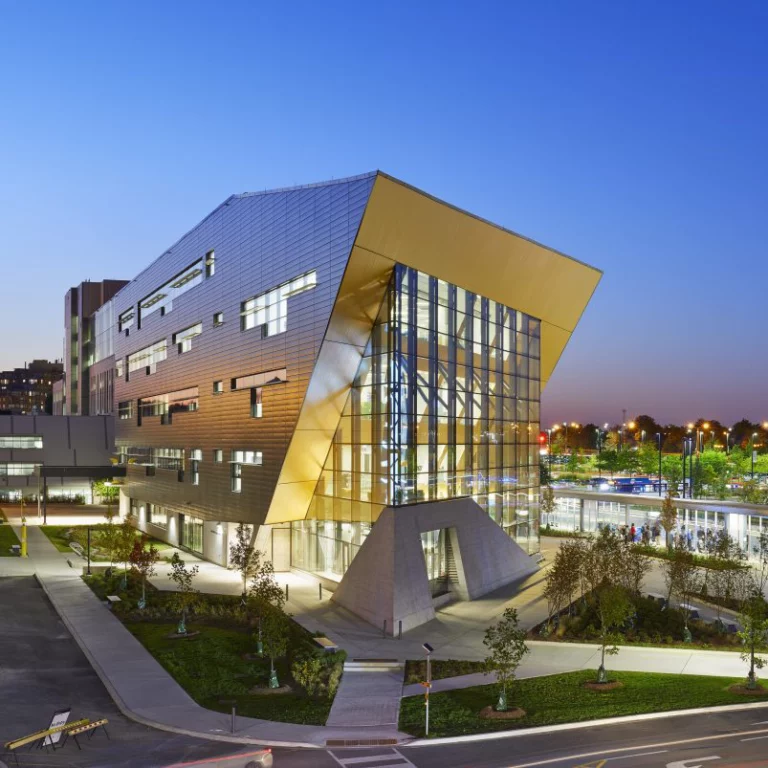
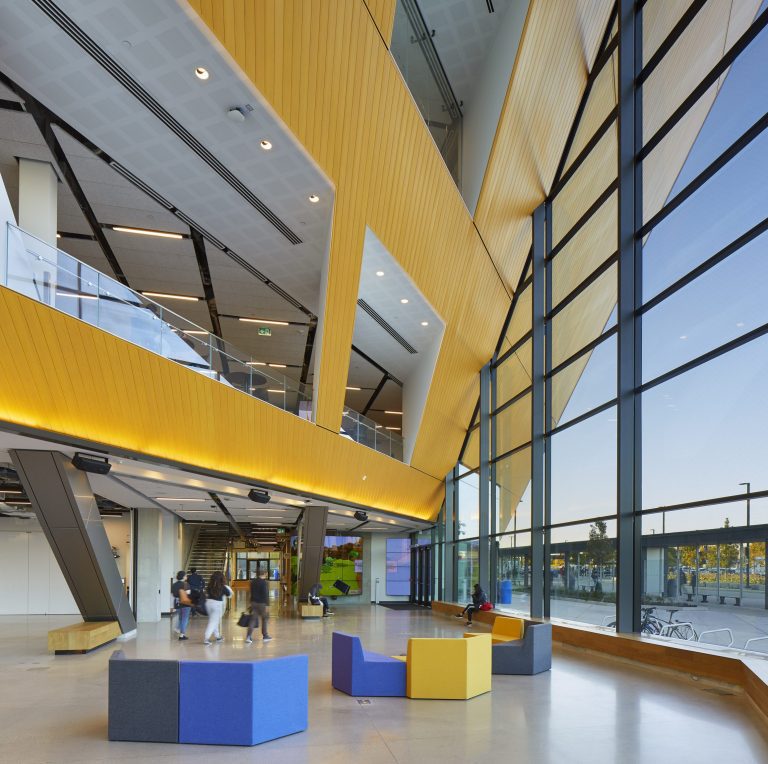
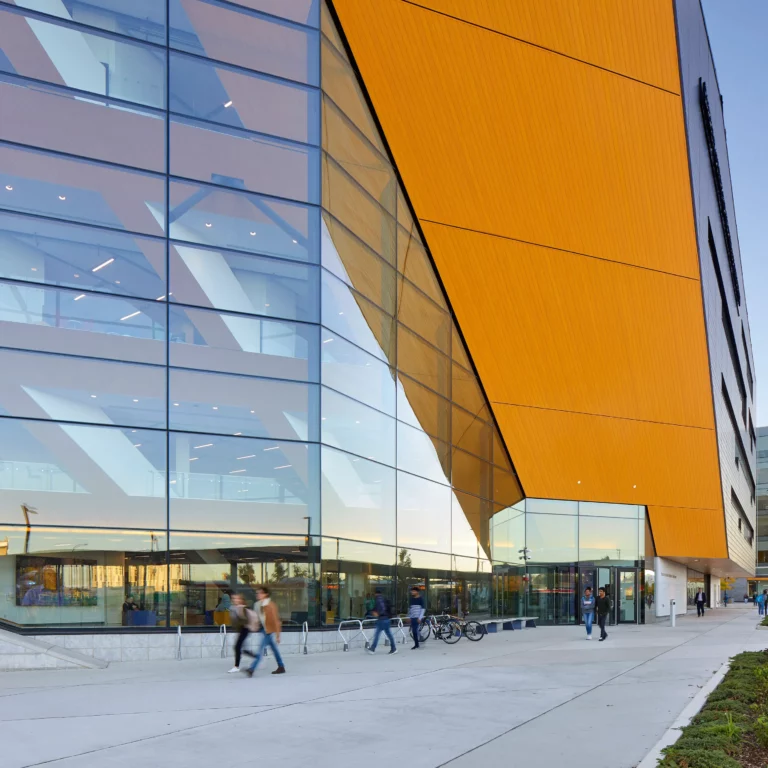
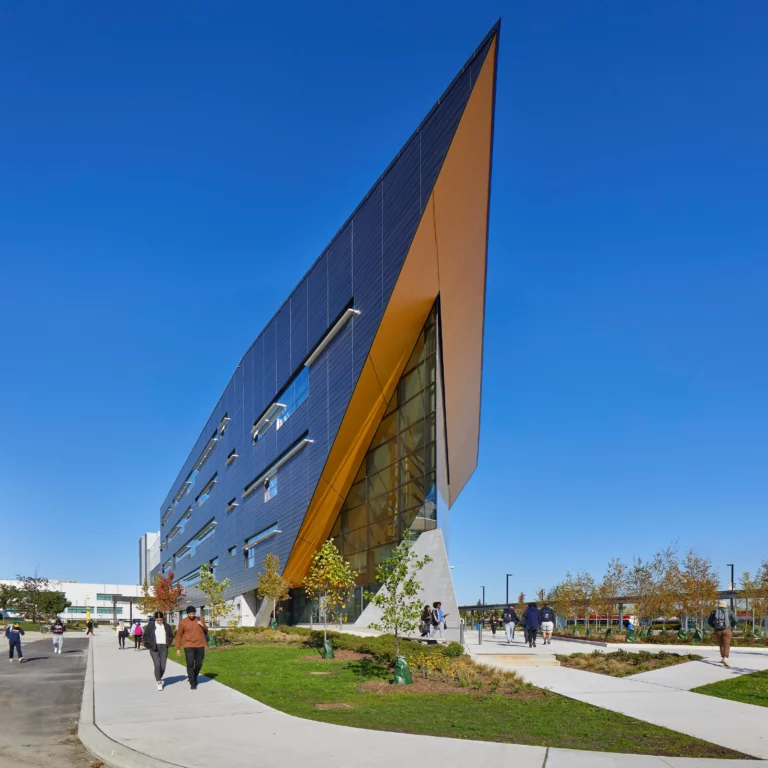
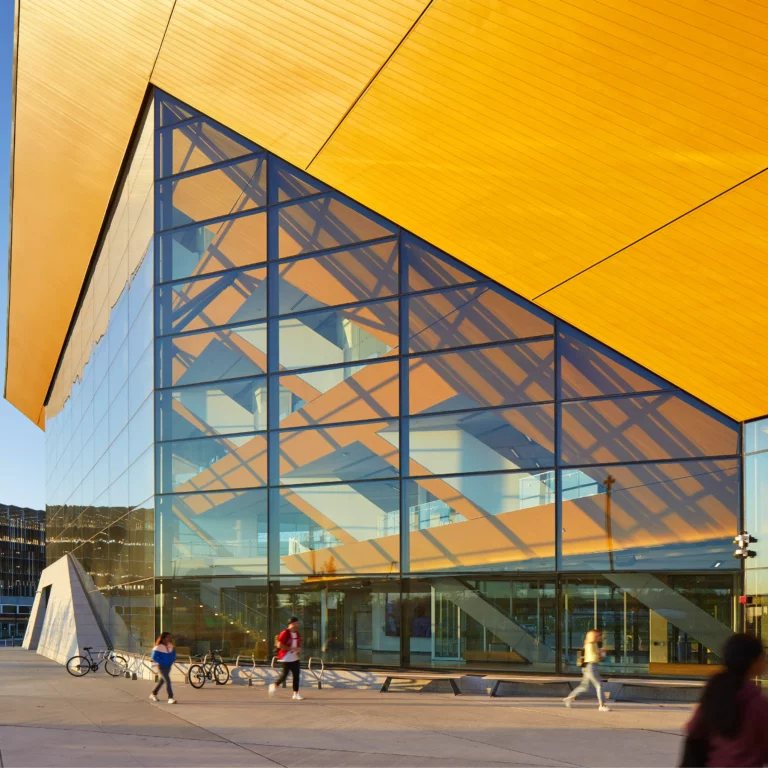
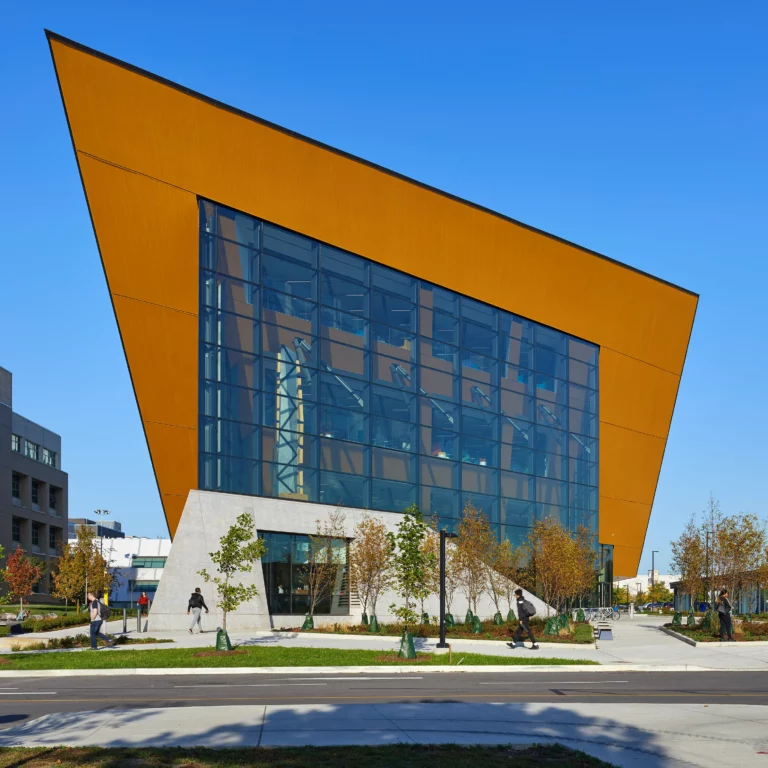
Frequently Asked Questions
How do students and faculty interact with the Barrett Centre for Technology Innovation's facilities to enhance their learning and research in technology and innovation?
They play a pivotal role in mentoring students, guiding them in applied research projects, and even leading joint research teams with industry partners. This collaborative environment allows faculty to stay actively engaged in their fields while fostering student success and innovation.

